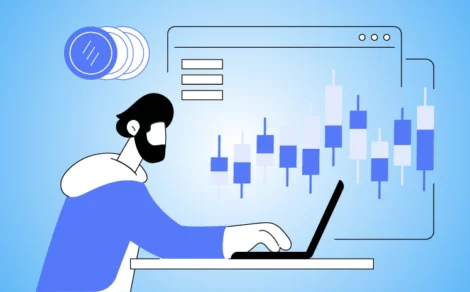An ascending flag or triangle is generally considered bullish. It suggests that buyers are gaining strength, and a breakout to the upside could be nearby.
Toruscope » Investment Guide » Understanding the Ascending Triangle Pattern in Trading: A Quiet Signal with Loud Potential
Understanding the Ascending Triangle Pattern in Trading: A Quiet Signal with Loud Potential
By: torus
- 14.May.2025
-
0(0)
- 348
In the world of charts, indicators, and wild price swings, some patterns speak softly but carry a big stick. The ascending triangle pattern is one of those. It doesn’t scream for attention, but when it completes, it often packs a punch.
You don’t need to be a technical analyst or a full-time trader to recognize it. This pattern shows up quietly, in plain sight, on everything from stocks to crypto. And once you understand what to look for, it’s hard to miss.
Let’s break it down together—what it is, how to spot it, and when it might actually mean something.
Defining Ascending Triangle Pattern
What is ascending triangle pattern? At its core, it’s a technical pattern that hints a breakout might be around the corner. It forms when a stock or asset keeps testing a horizontal resistance level while the lows keep inching up.
Visually, it looks like a right-angled triangle that’s pointing upward. You’ve got:
- A flat line across the top (resistance).
- An upward-sloping line below (support).
This shape tells a story: buyers are becoming more confident. They keep stepping in earlier, pushing the lows higher. Meanwhile, the resistance level keeps holding, for now. Eventually, something’s got to give.
Important Characteristics of the Ascending Triangle Pattern
Here’s what makes this chart pattern stand out:
- Flat Resistance Line – Price hits a ceiling multiple times but doesn’t fall apart. It keeps coming back like it has unfinished business.
- Rising Support Line – Each time it drops, buyers jump in a little sooner than before.
- Squeezing Price Action – The range gets tighter. Price is coiling, waiting to pop.
- Volume Drop Then Spike – Volume usually dries up during the formation. Then suddenly boom! it spikes when the breakout happens.
It’s like a pressure cooker. The longer it builds up, the more powerful the release can be.
How to Spot an Ascending Triangle Chart Pattern?
Recognizing the ascending triangle chart pattern takes some practice, but it’s not complicated.
Start by looking for a stock that’s bumping its head on the same resistance price again and again. That’s your upper line.
Then check the lows. Are they rising steadily over time? That’s your bottom line.
Draw two trendlines, one flat across the top and another moving upward from the bottom. If price is bouncing between them, forming that “triangle” shape, you’re onto something.
Pro tip: Set alerts near the resistance level. When price approaches with rising volume, that could be your breakout signal.
Ascending Triangle Pattern: Advantages and Disadvantages
Let’s keep it honest. Every pattern has its ups and downs. This one’s no different.
| Pros | Cons |
| Easy to recognize once you’re familiar | False breakouts happen, especially without volume |
| Provides clear support/resistance levels | Doesn’t work well in sideways/choppy markets |
| Can offer high reward-to-risk opportunities | Needs confirmation—can’t rely on shape alone |
| Works across assets—stocks, forex, crypto | Entry timing can be tricky without patience |
So yeah, it’s useful. But don’t treat it like gospel. It’s a tool and not a prediction machine.
Conclusion
The ascending triangle pattern isn’t loud or dramatic. It doesn’t always shout “Buy now!” But for those who know how to spot it, it can be a really helpful clue.
It shows when buyers are gaining ground. It shows where sellers are digging in. And it shows when a breakout might be close, if you’re paying attention.
Just remember: no pattern works in isolation. Use it with other tools. Confirm with volume. Keep your risk in check.
Frequently Asked Questions
There are three primary triangle patterns in technical analysis:
– Ascending triangle (bullish bias)
– Descending triangle (bearish bias)
– Symmetrical triangle (neutral, can break either way)
Success rates vary, but historical chart studies suggest around 65–70% of ascending triangles result in upward breakouts when properly formed and confirmed with volume.
There’s no strict formula, but traders often measure the height of the triangle (from resistance to lowest support) and project that upward from the breakout point to set a price target.
Look for:
– A flat resistance level
– Rising higher lows
– Tightening price range
– A potential breakout as price approaches the triangle tip
Confirmation with volume and momentum indicators makes the pattern more reliable.
Related Reads
Free Cash Flow (FCF) Explained
When evaluating any business, one practical question stands out: how much cash does the...
By: torus
- 5 mins
- 04.Aug.2025
- 0(0)
- 48
Fair Value Gap (FVG): A Trader’s Guide to Market Inefficiencies
In the world of technical analysis, chart patterns, and price action strategies, traders often...
By: torus
- 8 mins
- 30.May.2025
- 0(0)
- 305
What is Dissaving? | Definition, Causes & Examples
Financial planning isn’t just about saving, but it’s also about managing how and when...
By: torus
- 7 mins
- 30.May.2025
- 0(0)
- 122
Your Step-by-Step Guide to Becoming Debt-Free
Debt can be overwhelming, especially when it starts to feel like you’re just working...
By: torus
- 5 mins
- 30.May.2025
- 0(0)
- 98
What Are G-Secs? A Beginner’s Guide to Understanding How Its Working
Ever wondered what “G-Secs” are that your financial advisor keeps mentioning? Short for Government...
By: torus
- 7 mins
- 30.May.2025
- 0(0)
- 119
Understanding Quantitative Easing and Its Impact
When economic growth begins to stall, central banks play an essential role in steering...
By: torus
- 7 mins
- 30.May.2025
- 0(0)
- 105
Disclaimer: The content provided in this blog is for informational purposes only and does not constitute financial advice or recommendations. The content may be subject to change and revision. Readers are encouraged to conduct their own research and consult with a qualified financial advisor before making any investment decisions. Torus Digital and its affiliates takes no guarantees whatsoever as to its completeness, correctness or accuracy since these details may be acquired from third party and we will not be responsible for any direct or indirect losses or liabilities incurred from actions taken based on the information provided herein. For more details, please visit www.torusdigital.com.
Tenneco Clean Air IPO Listing: Strong Market Debut with 27% Premium
Tenneco Clean Air India Ltd made a confident entrance into the public markets on...
By: torus
- 5 mins
- 19.Nov.2025
-
3.7(6)
-
348
Stock to Buy Today: November 19, 2025
The Indian stock market witnessed a mild decline on November 18, 2025, ending a...
By: torus
- 4 mins
- 19.Nov.2025
-
4.3(3)
-
348
Mirae Asset Infrastructure Fund NFO: A Sector-Focused Bet on India’s Growth
Mirae Asset Mutual Fund has launched a new equity scheme — Mirae Asset Infrastructure...
By: torus
- 4 mins
- 18.Nov.2025
-
4.3(6)
-
348
Emmvee Photovoltaic IPO: Shares Make Muted Market Debut, List Flat At ₹217
Emmvee Photovoltaic Power made a muted debut on 18 November 2025, listing flat at...
By: torus
- 3 mins
- 18.Nov.2025
-
3.7(6)
-
348







